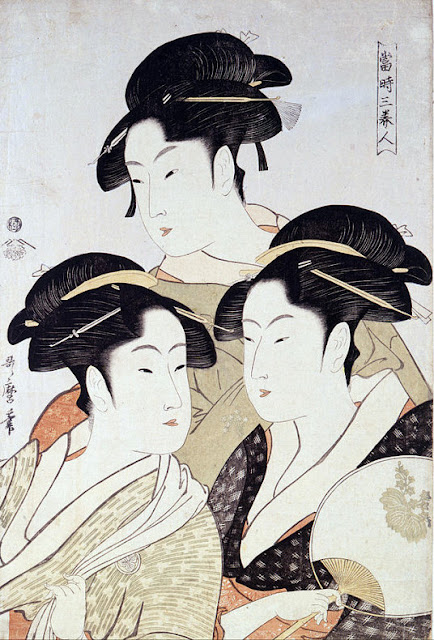 |
| Utamaro: Scops Owl and Bullfinches |
Momo chidori kyôka awase [One Hundred Birds in a Competition of Humorous Poetry] from about 1790, sometimes considered the epitome of kachô-e, is an album by Kitagawa Utamaro (1753-1806). In my opinion, there are more beautiful examples of kachô-e, but Utamaro's studies of birds are exquisite.
The album was published by Tsutaya Juzaburo (1748-1797) as one of his anthologies of kyōka, a form of comic verse. His friend Utamaro illustrated several of those anthologies. Momo chidori kyôka awase is the most famous result of their co-operation.
The picture I have chosen from the album is Scops Owl (Mimizuku) and Bullfinches (Uso).
Kachô-e (also called kachô-ga) is a sub-genre of ukiyo-e. Strictly, it is defined as “studies of flowers and birds”, but while many artists limited themselves to flowers and birds, others went beyond that to other plants and animals. In a broader sense we can say that kachô-e is about studies of plants and animals in general.


